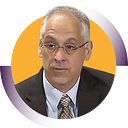Disrupting The Way We Travel
Put bluntly: The infrastructure we have in one era isn’t the infrastructure we’ll need in the next.
Devin Liddell — A futurist predicts the 3 biggest disruptions to how we’ll travel
That quote from a recent article can be applied to anything. For example, the institutions created in one era are not suited for the next. In the article, Futurist Devin Liddell looks at what he believes are the three biggest disruptions coming to travel. He begins by looking at the transformative changes existing infrastructure will struggle to support. First, as mentioned in an earlier post on urbanization, seventy percent of the human population is projected to live in cities by 2050. Second, climate change is poised to wreak havoc on cities, ninety percent of which are coastal. Lastly, the phenomenon of blurring boundaries takes the world of physical infrastructure and merges it with the digital domain.
These disruptive forces dictate the need for resilience and adaptability. I’ve described this heightened awareness when illustrating the illuminating effect of the pandemic. This need is not new, as a convergence of forces has stressed the importance of resilience and adaptability for some time now. Viewed through the lens of infrastructure, the author states that it will need to operate within this new reality. He describes the three superpowers that we will need from the next generation of transportation infrastructure.
The first is the marriage of code and concrete. Resilience and adaptability are built in via intelligence. Multiple digital technologies are involved in orchestrating a transformed traffic scenario, including autonomous and connected vehicles, artificial intelligence, drones, computer vision, 3D Printing, augmented reality, and more. The second is the need to not only decarbonize transportation, but the infrastructure that supports carbon-free options as well. Several examples are provided:
- China constructed its first highway with built-in inductive charging for electric vehicles four years ago
- Indianapolis International Airport now boasts the largest airport-based solar farm in the world
- Trains in the Netherlands have been running exclusively on wind energy since 2017
The third transformative force referenced in the article is an intermodal mobility ecosystem. This ecosystem will orchestrate our mobility by optimizing the modes available to us using artificial intelligence. These increasingly autonomous, connected, electric, and shared modes are orchestrated on our behalf.
The next big leap forward is when computing power does that on our behalf, making every shared bike, car, bus, ferry, subway, and aircraft part of the network and creating intermodal trips by doing all the planning, paying, and prompting for us.
Devin Liddell — A futurist predicts the 3 biggest disruptions to how we’ll travel
A very good look into several aspects of the way we travel in the future. A big steps towards a very different future of mobility.
Originally published at http://frankdiana.net on April 11, 2022.
